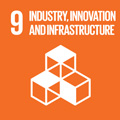- Docente: Stefano Gandolfi
- Credits: 9
- SSD: ICAR/06
- Language: Italian
- Moduli: Stefano Gandolfi (Modulo 1) Luca Vittuari (Modulo 2) Stefano Gandolfi (Modulo 3)
- Teaching Mode: Traditional lectures (Modulo 1) Traditional lectures (Modulo 2) Traditional lectures (Modulo 3)
- Campus: Bologna
- Corso: Second cycle degree programme (LM) in Civil Engineering (cod. 0930)
-
from Feb 17, 2025 to Mar 10, 2025
-
from Mar 12, 2025 to Apr 16, 2025
-
from Apr 28, 2025 to Jun 11, 2025
Learning outcomes
With this course the student acquire knowledge concerning advanced methods for high accurate topographical and geodetic survey useful for structures monitoring (buildings), monitoring of infrastructures (bridges and dams) and monitoring of the territory (landslides, subsidence, etc.). In this course the most advanced techniques for geodetic and topographic survey are deeply analysed considering design aspects, data treatment, and statistical analysis. The course is divided in a theoretical part and a practice section. Is also planned a couple of daily visit to dams or monitoring systems.
Course contents
Basic suggested knowledges
Basic on survey
Basic in statistical data analisys and variance/covariance propagation in non-linear multidimensional functions
Course Contents
Elements of Geodesy
Geodetic reference systems and reference frames
- ITRF, EUREF, RDN, IGM95, local geodetic reference frame
National and International geodetic reference networks
- IGM95 – Rete Dinamica Nazionale – IGS
Coordinate systems and their transformation
- geocentric coordinate systems
- geographical coordinates
- Transformation between Geographical Reference frame and local geodetic reference systems
Data analysis
Variance/covariance propagation theory in linear and non linear function.
Adjustment theory: free network, minimal constraint, constrained networks.
Statistical propreties of parameter estimation in Adjustment theory.
Statistical analysis of movements
Instruments and Methods for geometric levelling, GPS (static, kinematic and Real time)
Network for Real time Kinematics
Time series Analysis
Practice:
static GNSS survey and data processing
Kinematic GNSS survey and data processing
Geometric Levelling survey and data processing
GNSS-RTK(NRTK) survey and data analysis
Readings/Bibliography
The teacher upload the personal notes on IOL Unibo Web pages.
Teaching methods
The course is composed by frontal lessons, practice (outdoor and in laboratory) and a couple of educational trips.
In particular the course is generally composed by:
- 60% of frontal lessons
- 25% of practice (outdoor and in laboratory)
- 15% of educational trips
Assessment methods
The exam consist in a oral discussion that start from a real case of structure monitoring or land monitoring.
Will be analized the topographic survey techniques, survey methodologies and capability to detect a movement starting from the design of monitoring system.
The evaluation will be based on different aspect related to:
1) capability to identify the best methods and instrumentations for the case study
2) Knowledge of the methods and tecniques usefull for the case study
3) Capability to apply statistical tests for minimum movement detection.
4) Capability to estimate the real accuracy obtained by a topographical survey using the statistical law of the variance/covariance propagation in non linear multidimensional functions
Teaching tools
In order to support the classical frontal lessons in the classroom, some practical exercises will be performed both in outdoors and in the laboratory. Moreover some guided tours will be perfomed.
In particular:
Practices (outdoor)
- Survey of a small network using spirit leveling.
- Survey of a geodetic network using GPS static approach.
- RTK and NRTK survey practice
Data analysis (laboratory)
Data Processing of the acquired data during the practices (in outdoor)
Guided Tours Dams:
- Ridracoli
- Bilancino
During the practices very high precision surveying instruments will be provided. Laboratory are equipped with specific software packages for dataprocessing and analysis of data
Office hours
See the website of Stefano Gandolfi
See the website of Luca Vittuari
SDGs


This teaching activity contributes to the achievement of the Sustainable Development Goals of the UN 2030 Agenda.
